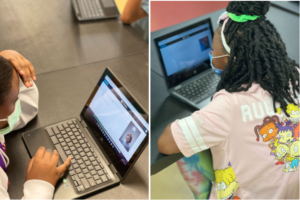10 Tips For EdLeaders Feeling Overwhelmed And Insufficient

How do you handle the “I’m not up to the task” feeling? The day it’s up to you as a school or system leader, it’s hard not to be overwhelmed with this feeling of insufficiency.
For me, it was sitting at the mall after accepting the job of school district superintendent and seeing all the kids and realizing that their education was on me. I felt the yoke of responsibility, unlike anything I had before. For that kindergartener, this was her one shot at learning to read. For that ninth grader, this was his chance to piece together a high school transcript that would give him a way out.
My first year as superintendent was the year the state introduced standards, assessments and accountability. It was also the year we attempted Anywhere, Anytime Learning—a laptop for every secondary student. Either one of these would have been challenging in a high growth, high challenge community—attempting both was probably crazy. In many ways, I was unprepared for the challenge. I came home every day wondering what in the world made me think I could do the job.
Fast forward twenty years and the work is even more difficult. Personalized learning is promising but challenging. It’s humbling to approach complex work in a complicated context, so here are 10 tips to help you along the way.
1. Be Transparent. Let folks know that you get it, you see it, you know how hard it is and how far you have to go. Invite people inside and outside the system to tell you the truth. Let the community experience you as a learner.
2. Listen First. Leaders listen first. They build relationships and exhibit respect for the dignity and worth of all people. The first step of Stanford’s d.school’s design process is to empathize, to deeply understand the issues and challenges of the people you serve. Listening will build trust and understanding.
3. Make Good First Impressions. And make as many as possible. Meet as many people before and during the first 90 days as possible. Visit every school and classroom (if possible). If you want your students to have a growth mindset, you should model it in your first 90 day meetings–be hard working, humble and open minded.
4. Talk It Out. This is lonely work. You need someone—or at least a journal–that you can talk to. A mentor and/or a professional learning community can help. Reflective activities (meditation, journaling, prayer) can help get rid of the negative voice in your head.
5. Visit High-Performing Schools and Districts. Take a few people and talk about what you experienced. We think it’s the best form of professional learning. In addition to learning what’s possible, you’ll find that even the best schools are struggling with the same issues that keep you up at night. Wise leaders realize being proactive about culture is key, and many schools (see EdWeek feature article), are implementing programs such as Mayerson Academy’s Thriving Learning Communities to build a positive strengths-focused culture.
6. Share your Next-Gen Vision. Practice shorthand ways of sharing your learner experience vision. What should graduates know and be able to do? Why is it important to you? Use your personal narrative. You’ll have a hundred opportunities to share your story during your first year.
7. Go Slow To Go Fast. Leadership productivity often means knowing when to go slow. Daniel Kahneman warns against rapid instinctive decisions. “The people who have the greatest influence on the lives of others are likely to be optimistic and overconfident, and to take more risks than they realize.” When mobilizing for systems change, heed the old adage, “go slow to go fast.”
8. Build A Team. This all takes a great team. Make any obvious changes as first steps toward building a high trust, high capacity team. According to Jim Collins, it often comes down to “trusting the right people.” Collins laid it out like this:
- Share your core values with the team.
- Do not tightly manage them.
- Remind them they don’t have a job, they have responsibilities.
- Make sure they do what they say they’ll do.
- You must be passionate.
9. Grab Low Hanging Fruit. Start with the easy stuff. Gather some quick wins. Find a couple symbolic acts that let the community know who you are and what you’re about–fix a problem, build a bridge, take a stand. Hold community conversations that yield temporary agreements that balance improvement and innovation. Pick one thing that should be different and better next fall and make it happen.
10. Communicate Reliable Hope. While transparency is important, you must find a way to build and convey a sense that things can and will get better—and reasonably fast. Use evidence of early wins to create momentum. Gather anecdotes, find friendly voices and use social media to convey momentum toward your shared vision.
Bonus Tip: Stay Healthy. Leaders live wholeheartedly; they honor family as well as professional commitments. They create a healthy balance. During the inevitable barrage of criticism, remember it’s probably not about you, it’s about the job. Take care of your family, it’s harder on them than it is on you.
The impostor syndrome is not unusual. Anyone trying to help young people develop into contributing adults will, at times, feel inadequate to the challenge–especially if they are responsible for hundreds or thousands of young lives.
For more, see:
- Competitive, Coherent, Creative: The 21st Century School District
- 15 Tips for new superintendents
- 7 Things Education Leaders Should Do Right Now
- The Primacy of Relationships
- Helping CAOs Make The Shift From Managed Instruction To Personalized Learning.
- Agreement Crafting: 10 Lessons on The Politics of Schooling








0 Comments
Leave a Comment
Your email address will not be published. All fields are required.